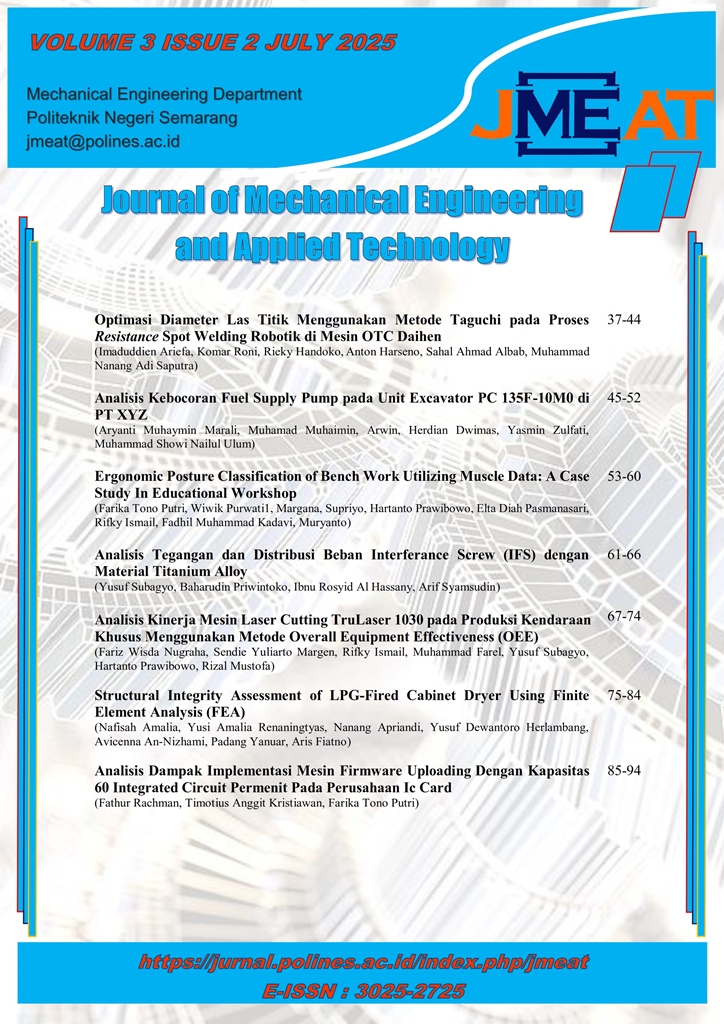ERGONOMIC POSTURE CLASSIFICATION OF BENCH WORK UTILIZING MUSCLE DATA: A CASE STUDY IN EDUCATIONAL WORKSHOP
DOI:
https://doi.org/10.32497/jmeat.v3i2.6674Abstract
Occupational musculoskeletal disorders (MSDs) often result from prolonged non-ergonomic postures, especially in educational and industrial bench work activities. This study presents an approach to classify ergonomic and non-ergonomic working postures using surface electromyography (sEMG) signals and machine learning. sEMG data were recorded from four upper limb muscles during simulated bench work conditions. Time-domain and frequency-domain features were extracted from segmented EMG signals using sliding windows. Dimensionality reduction was performed using Principal Component Analysis (PCA), and classification was carried out using logistic regression. The proposed system achieved an overall classification accuracy of 75% in distinguishing ergonomic and non-ergonomic postures. Visualization using PCA and Linear Discriminant Analysis (LDA) showed clear class separation, validating the discriminatory power of the extracted features. While the small sample size and class imbalance were identified as limitations, the study demonstrates that a simple and interpretable model like Logistic Regression, when combined with proper feature engineering, can yield promising results.This work contributes to the development of low-cost, efficient, and interpretable ergonomic assessment tools. It is particularly relevant for vocational and educational environments where real-time posture monitoring and early prevention of MSDs are essential. Future research should focus on expanding the dataset, exploring deep learning methods, and implementing real-time wearable systems.
Downloads
Published
Issue
Section
License

This work is licensed under a Creative Commons Attribution-NonCommercial-ShareAlike 4.0 International License.
Authors who publish articles in this journal agree to the following terms:
The author owns the copyright and grants first publication rights to the Journal with work simultaneously licensed under a Creative Commons Attribution License which allows others to share the work with the work acknowledged and first published in this journal
Authors may enter into separate, additional contractual agreements for the non-exclusive distribution of the journal's published version of the work (for example, posting it to an institutional repository or publishing it in a book), with an acknowledgment of the first publication in this journal.
Authors are permitted and encouraged to upload their work online (for example, in an institutional repository or on an author's website) before and during the submission process, as this can lead to productive exchanges, as well as earlier citations and a larger number of citations of the published work. (See the impact of open Access).






